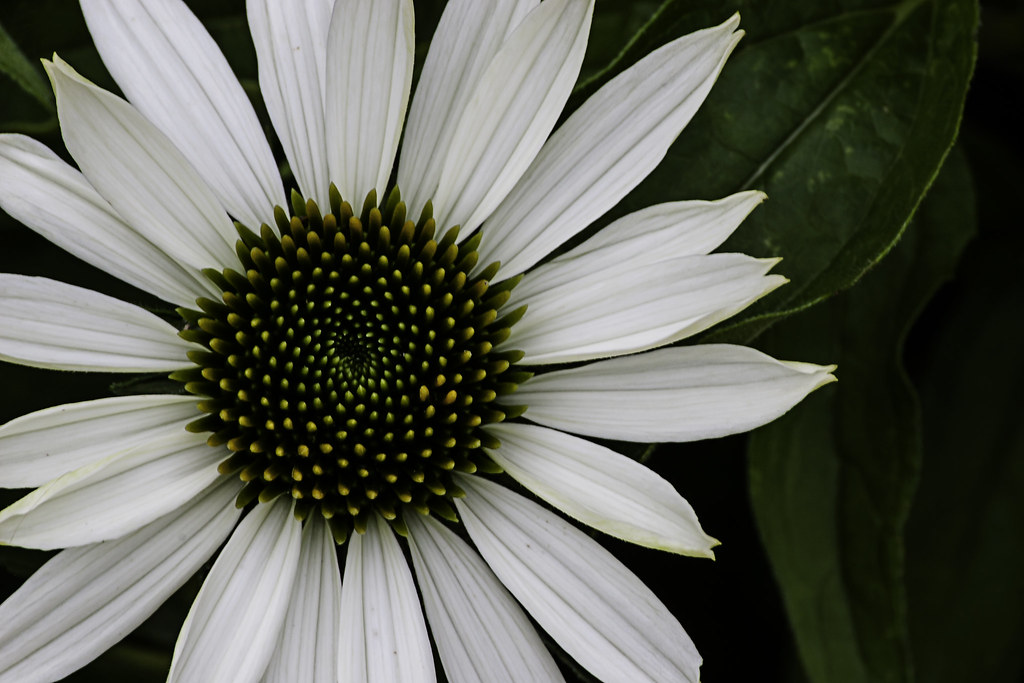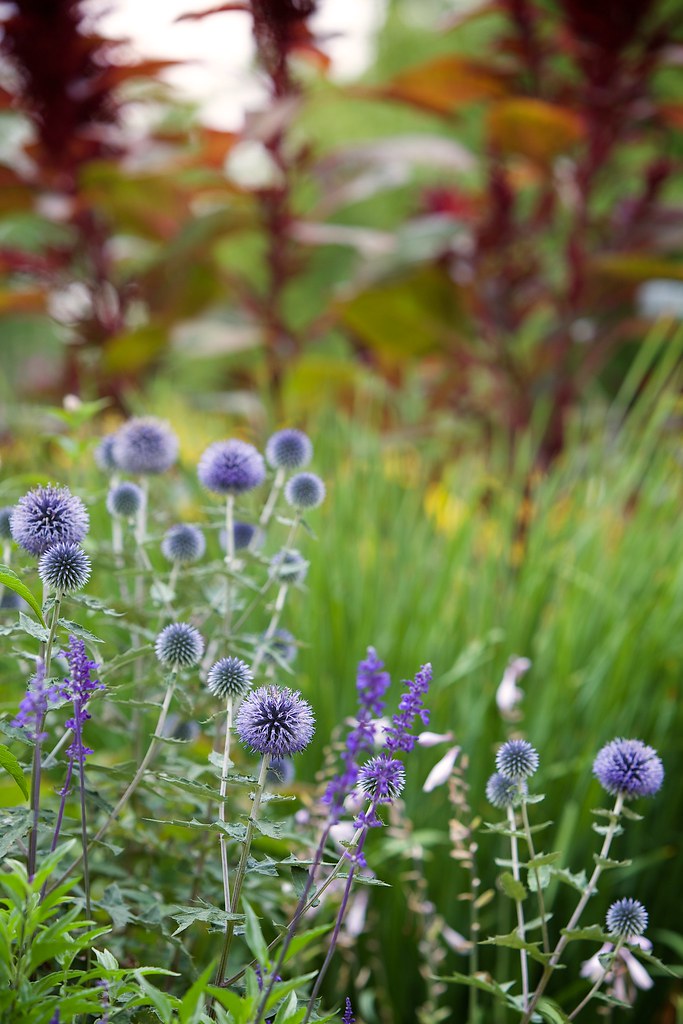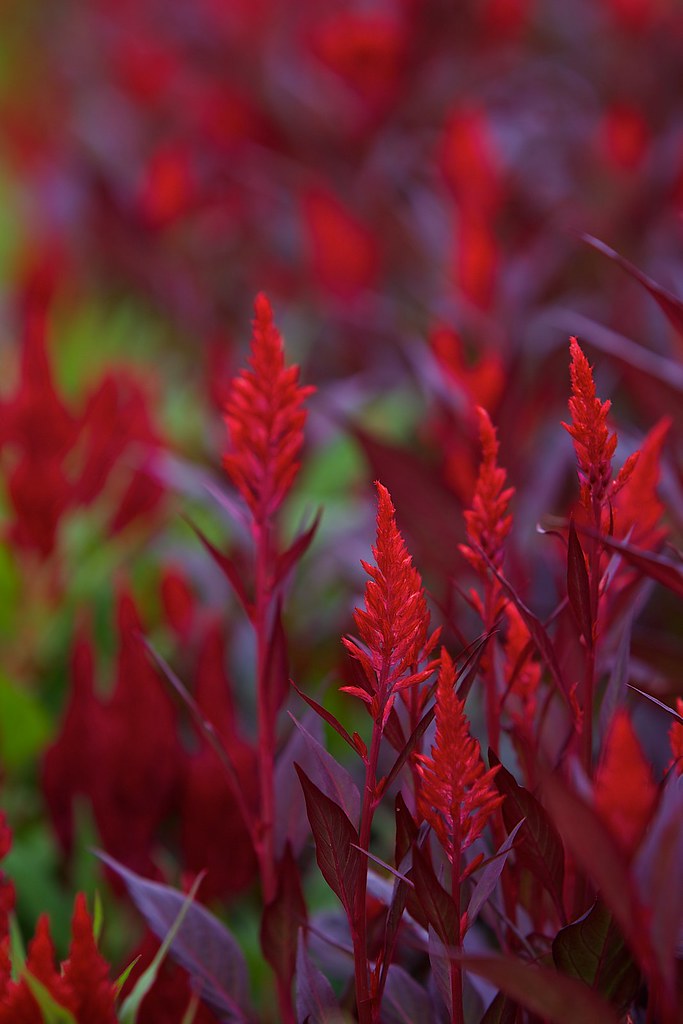"Evaluative", "Partial", and "Spot" are all
metering modes... they don't affect focus.
The ability to get two flower both in-focus vs. one in focus and the other out of focus the result of the "depth of field" that the image had. The "field" is the range of distances that objects can be from the lens and still be more-or-less in acceptable focus. A large "depth of field" (DoF) means that much of the content in the image will be in focus (subjects near or far) whereas a shallow DoF would not allow much else to be in sharp focus besides the object(s) at the lens' focus distance.
DoF is controlled by three factors:
1) The focal length of the lens. The shots I posted above were all shot somewhere between 100mm and 120mm focal lengths. Longer focal length lenses naturally create shallower depth-of-field. Wide angle lenses (short focal lengths) naturally create a large depth-of-field.
2) The focal ratio (aka "f-stop") being used by the lens. The first two images above were shot at f/4 (I use this a lot) and the third was taken at f/5.6. A tiny aperture opening (high f-stop number) provides for a larger depth of field. A larger aperture opening (low f-stop number) creates a shallow depth of field.
3) The focus distance. As the camera focuses to distances that are farther away, the depth-of-field naturally becomes larger. You get shallower depth-of-field if the focus distance is set closer to the camera (in "macro" / close-up photographer, the depth-of-field came become so extremely thin that it's challenging to get all of your intended subject in-focus and photographers sometimes have to resort to "focus stacking" ... shooting multiple images, each focused to a slightly different distance, and then merge them to create a single image with reasonable focus.)
If you put all of these factors together... e.g. if you shoot with a very long lens, and use a very low focal ratio, but set the focused distance at or near the minimum focus distance the lens will allow... you get a VERY narrow depth-of-field.
There are charts and applications that can help with this. See:
Hyperfocal Distance and Depth of Field Calculator - DOFMaster
As you shoot more, you'll begin to get a feel for how much depth of field you can expect from typical focal length / ratio / distance combinations that you tend to use frequently. This is why although I own mostly lenses that provide f/2.8 or better... I tend to do most of my shoot at f/4... or higher. I do use the lower focal ratios ... but I'm careful when choosing lower focal ratios because I know I may hit a point where I can't get everything in focus that I want in focus if the f-stop is too low.

 IMG_6821a
IMG_6821a Cottage Gardens
Cottage Gardens VO3A3109
VO3A3109 Tulips
Tulips










